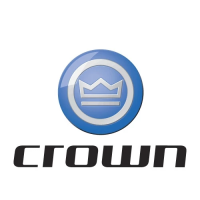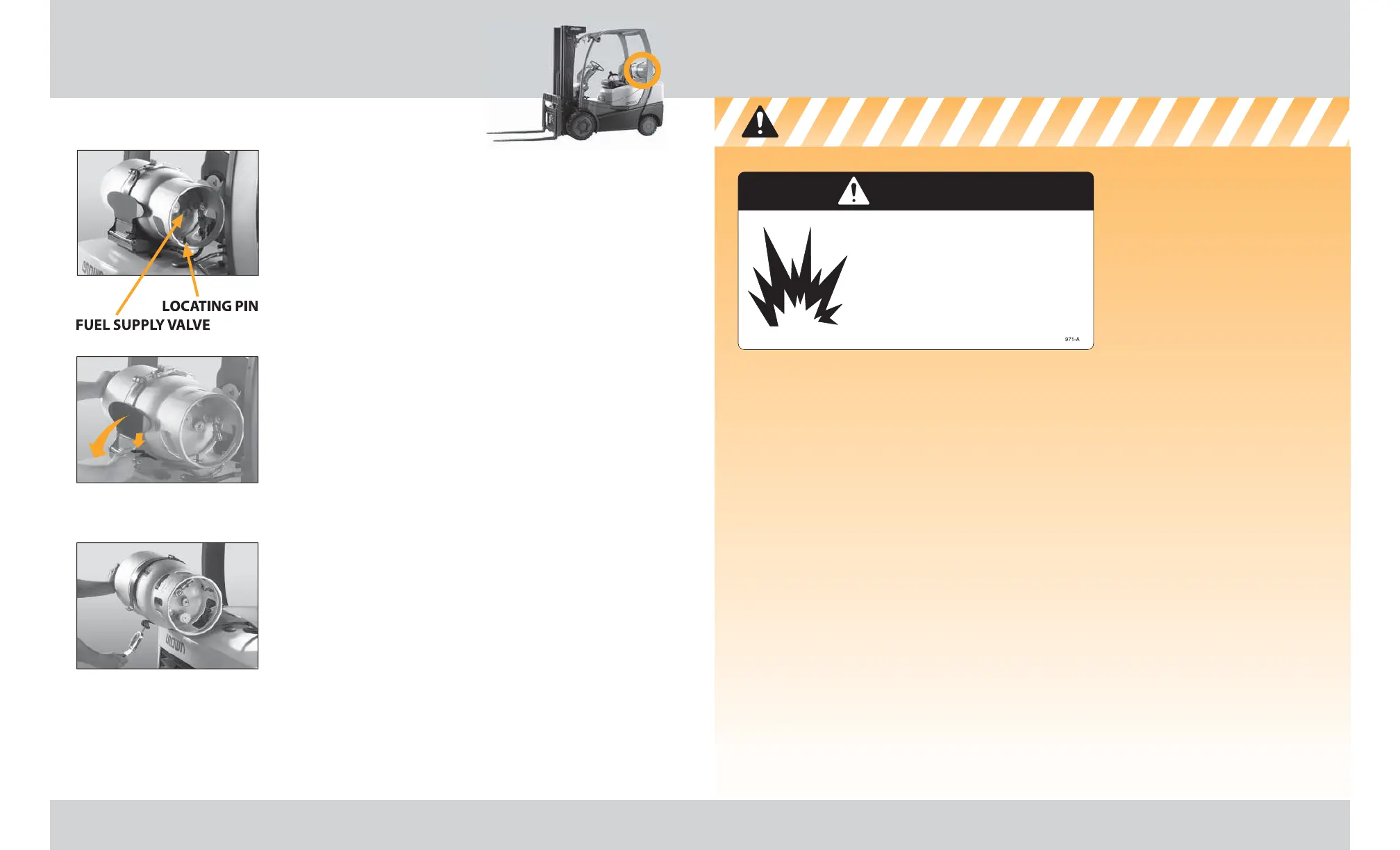Know the Hazards
Fueling, Propane (LPG)
29 Fueling, Propane (LPG) Fueling, Propane (LPG) 30
BEFORE YOU REMOVE THE LPG CYLINDER
1. Set the parking brake before leaving the truck. Chock
wheels if on an incline.
2. While the engine is running, close the cylinder fuel
supply valve (turn clockwise). After the engine stops
running, turn the ignition switch OFF and disconnect
the fuel hose from the cylinder.
SWING-DOWN TANK MOUNT
1. Push down on the release lever on the side of the
swing-down tank mount.
2. Grasp the tank fi rmly and carefully lower to the down
position.
3. Release the tank strap and remove the cylinder.
Caution:
Do not operate the truck with tank in lowered
position.
WHEN YOU INSTALL A LPG CYLINDER
1. Place correct size and type cylinder onto tank mount.
Locating pin must fi t through hole in cylinder collar.
2. Keeping your fi ngers clear, tighten the tank clamp.
Return the swing-down mount to the upright position
if your truck has that option. Make certain the tank and
the mount are secure.
3. Attach the fuel hose to the cylinder and open the fuel
supply valve SLOWLY to gradually equalize pressure
and prevent the excess fl ow check valve from closing.
4. Check for leakage. If leakage is suspected, close the
fuel supply valve and contact your supervisor.
PROPANE CYLINDERS CAN BE
DANGEROUS
Propane gas can cause a fi re or
even an explosion.
• Do not try to install, remove,
refi ll or service your propane
cylinder unless you are
trained and authorized.
• Never smoke or use an open
fl ame around propane.
Propane gas can cause a fi re or even an explosion.
Do not try to install, remove, refi ll or service a propane
cylinder unless you are trained and authorized.
Never smoke or have an open fl ame around propane.
See mounting bracket for allowable cylinder size.
Locating pin must fi t through hole in cylinder collar to
maintain proper position.
If gas odor is detected or frost appears, turn off engine,
close cylinder valve and contact supervisor or service
department.
• Your company should provide a ventilated area where it is safe to service and store
propane cylinders.
• Disconnect the truck battery before servicing the fuel system.
• Wear proper personal protection equipment.
• Propane cylinders are heavy. Ask for help.
• Cylinders must not extend outside the truck.
• The fuel valve should be turned off when the truck is not in use.
• If a gas odor is detected, or frost is noticed on the cylinder or valve, turn the engine
off and close the fuel supply valve. Contact your supervisor or service department.
• Use fuel manufactured to the National Gas Processors Association
“HD-5” specifi cation.
• Refueling of trucks with exchangeable or removable LP gas cylinders shall have the
LP gas cylinder removed prior to refueling. Refueling shall be done in accordance
with NFPA 58, 8.1.2.10 (ROP-28)
• Consult the National Fire Protection Association, Pamphlet 58, for additional
information on safe handling and storage of propane (LPG).
DANGER

